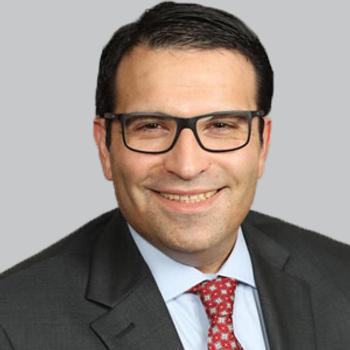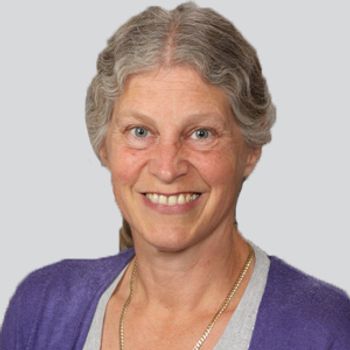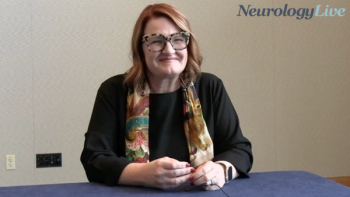
Although Frequently Used, Complementary and Alternative Medicine Ineffective to Treat Narcolepsy
Frequent medication change, adverse events, and low medication adherence appears more frequently in patients with narcolepsy who use complementary and alternative medicine.
Findings from a recent survey of 254 German patients with narcolepsy showed that biologically based therapies were the most frequently used in complementary and alternative medicine (CAM) subgroups (76%); however, their impact is limited. While on these medications, patients still felt the need to improve their symptoms, sleepiness, and psychological well being.1
Among 33% of CAM users (n = 84), vitamins/trace elements (54%), homoeopathy (48%) and meditation (39%) were used most frequently. Fifty-four users (64%) described CAM as helpful. CAM users more frequently reported side effects from previous medication (P = .001). Notably, CAM users reported more frequently not complying with pharmacological treatment than nonCAM users (21% vs. 8%; P = .024).
Senior author Ulf Kallweit, MD, assistant professor of neurology at the University Witten/Herdecke, Germany, and colleagues wrote, “Data indicate that current treatment options do not sufficiently improve symptoms (EDS in particular), and/or that the regularly used drugs often cause adverse effects. The relatively high use of mind-body interventions points to the need to improve psychological well-being. Patients with higher levels of education, and therefore presumably higher income, patients with lower adherence to conventional medicine, and those with more spare time are more likely to use CAM.”1
The study participants were recruited from 2 major German narcolepsy out-patient clinics in Witten and Berlin, by narcolepsy self-help groups, and the German Narcolepsy Network between November 2020 and May 2021. Participants self-reported their diagnosis information. A total of 272 adult patients with narcolepsy completed the survey and 254 of them were included in the final analysis (NT1: n = 181,71%; NT2: n = 73) because 18 were incomplete descriptive data or had no answers about CAM.
Demographics, data frequencies related to the disease, and impact of CAM use were assessed in the survey. CAM treatments commonly used were predetermined in a questionnaire based on alternative medical systems, biologically based therapies, energy therapies, mind-body interventions, and manipulative and body-based therapies according to the National Center for Complementary and Alternative Medicine.
The average age of participants was 35.8 years (SD,12.2; range, 18–82; women, n = 195) and mean age at diagnosis was 28 years for women (SD,12.0) and 32 years for men (SD, 9.9). The on average Epworth Sleepiness Scale (ESS) score was 16.4 (SD,3.8) and mean duration from disease onset was 29 years (range, 11–61 years). By gender, women (76% vs. 24%) more often used mind-body interventions including yoga (42% vs. 5%), meditation (45% vs. 4%), and art/music therapies (26% vs. 0%).
Once a week or more, 75% of CAM users utilized CAM and whereas only 23% of users did only once a month or more. Twenty-three percent of patients who did not take any conventional pharmacological treatment prior (n = 38) reported current CAM use. Twenty-seven percent of patients used both conventional medicine and CAM at the same time (n =69). Among those who reported past or present CAM use, 73% reported having automatic behavior (n = 61 vs. n = 97 nonCAM users), 68% reported hypnagogic/hypnopompic hallucinations (n = 57 vs. n = 91 nonCAM users), and 70% reported nightmares (n = 59 vs. n = 97 nonCAM users).
Seventy-five percent experienced at least one conventional medication regime change (n = 191). Notably, CAM users were significantly more likely to have used at least one other conventional medication prior to current medication (86% vs. 70%; P = .006) and significantly more likely to experience side effects compared with nonCAM users (86% vs. 66%; P = .001).
Of CAM users, 80% stated they trusted their doctor and mutually agreed with the treatment plan (n = 64). Thirty-six out of 80 (45%) of CAM users stated that costs were a large burden of CAM use. CAM users (n = 80) reported more often overcoming obstacles for receiving healthcare compared with nonCAM users (47% vs. 36%; P = .006). Fear of side effects of medications was higher in CAM users (47%) than nonCAM users (36%).
Limitations of the trial included diagnostic uncertainty because the study involved an online survey. Study participation did not include monetary compensation and required a high time commitment of 30 to 40 minutes. In addition, no incentive was given for participation without a diagnosis and any conflicting data was excluded from analysis. As the COVID-19 pandemic occurred during the survey period, the containment interventions ordered at the time might have impacted the findings.2,3 Therefore, further and larger studies may help to confirm the results from the survey, the study investigators noted.
Kallweit et al concluded, “Future studies should discuss the motivations of CAM users and for which symptoms patients use CAM. Also, over what period of time CAM was used and which therapies were used and which ones were beneficial or not.”1
REFERENCES
1. Finger BM, Triller A, Bourke AM, et al. Complementary and alternative medicine use in narcolepsy. Sleep Med. 2023;103:100-105. doi:10.1016/j.sleep.2023.01.013
2. Rodrigues Aguilar AC, Frange C, Huebra L, Dias Gomes AC, Tufik S, Santos Coelho FM. The effects of the COVID-19 pandemic on patients with narcolepsy. J Clin Sleep Med. 2021;17(4):621-627. doi:10.5664/jcsm.8952
3. Postiglione E, Pizza F, Ingravallo F, et al. Impact of COVID-19 pandemic lockdown on narcolepsy type 1 management. Brain Behav. 2021;11(1):e01955. doi:10.1002/brb3.1955
Newsletter
Keep your finger on the pulse of neurology—subscribe to NeurologyLive for expert interviews, new data, and breakthrough treatment updates.


































